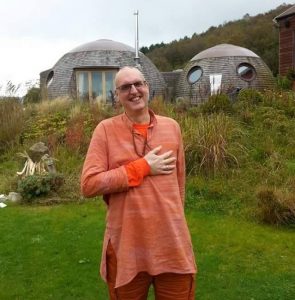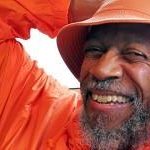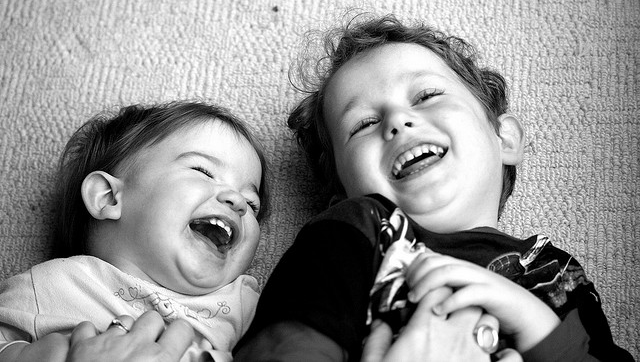Laughter Yoga
 People often say that “Happiness is like a butterfly” somewhat out of reach, and when we do try and catch it and pin it down, we risk squashing it or killing it altogether.
People often say that “Happiness is like a butterfly” somewhat out of reach, and when we do try and catch it and pin it down, we risk squashing it or killing it altogether.
But as a Laughter Yoga/Meditation workshop practitioner my approach is: “Laughter makes you happy. But you don’t have to be happy to laugh!” . I believe that through laughter, we CAN increase our happiness, we can boost our happiness and by doing so we can also influence and affect other people’s happiness, making the world a happier place.
Many teachers and ancient teachings, talk about true happiness only coming from within; that the rest of our feelings are all fleeting, and temporary. If this is the case, how can we learn how to tap into this well-spring of inner happiness that is apparently there for us all?
My own practice is in the teaching of Laughter Yoga/Meditation, as given to me through my teacher Laraaji Nadabrahmananda.  Known as Laraaji around the world for his music, he has also taught laughter workshops for the last 30 years or so. His own inspiration for teaching
Known as Laraaji around the world for his music, he has also taught laughter workshops for the last 30 years or so. His own inspiration for teaching
this was Oshos Orange Book, where he writes;
EVERY morning upon waking, before opening your eyes, stretch like
a cat. Stretch every fibre of your body. After three or four minutes,
with eyes still closed, begin to laugh. For five minutes just laugh. At
first you will be doing it, but soon the sound of your attempt will
cause genuine laughter. Lose yourself in laughter. It may take several
days before it really happens, for we are so unaccustomed to the
phenomenon. But before long it will be spontaneous and will change
the whole nature of your day.
The work we do in our Laughter Yoga workshops has a scientific as well as a spiritual basis, and it’s physiological and psychological benefits have been researched thoroughly
Whilst laughter does make you happy it is, in fact, not the laughter itself. Laughter is merely the trigger that sends a signal to the brain and, in particular, the pituitary gland. It’s the master glad, the pituitary releases endorphins, serotonin, dopamine and other hormones into the body when we laugh. These free, as yet untaxed, drugs give us the feeling of elation, buzziness, tingling when we laugh.
To help stimulate the pituitary into action we ask participants of our Laughter workshops to place their hands on their heads and with mouth closed hum. Hum in such a way that you can feel the vibration in the skull and on the hands. Once the hum is found turn this into a steady, regular, pulse. Humhum-hum-hum-hum. (As a secondary benefit this type of humming also increases the production of nasal Nitric Oxide by 15-fold which is beneficial to healing. Om chanting also has the same, beneficial, properties and more!)
When comfortable with that turn it into a mouth-closed chuckle. I then ask them to remove their hands and report on any feelings, sensations they may be feeling. Invariably they report tingling, buzziness, warmness around the head, ears and jawline. This is the endorphins kicking in. The brain cannot differentiate between genuine or faked laughter. It recognises the chuckle as small laugh and activates the pituitary gland.
There are other laughter-cises that we follow down through the endocrine system in the course of a Laughter Yoga/Meditation Workshop:
- THROAT – THYROID GLAND Regulates metabolism
Place hands gently on throat and with open mouth find a vibration that is throat specific. AAAAAAAHHHHH. Again turn that vibration into an open pulse and then and open mouth throat based laugh.
- CHEST – THYMUS the seat of our immune system and helps maintain and keep it healthy. Responsible for the production of T cells, C Cells which are important part of body’s defense mechanism. Shrinks as we reach middle age and therefore becomes less effective. Also shrinks when we are depressed, under stress, drink alcohol or take drugs.
Place hand on sternum/solar plexus area, centre of rib cage and find an open mouth tone that comes from the chest area. Turn this into a pulse and then a hearty open mouth chest based laugh.
- ABDOMEN the alimentary system – liver, kidneys, spleen, stomach, pancreas. Belly laughs. Also helps cleanse the lymphatic system by increasing the lymph flow around the body and increasing the activity of the Thoracic Duct.
With right hand and in clockwise motion give the abdomen a nice gentle massage. That’s the external massage Then for that internal massage have a deep, heartfelt belly laugh!
- ROOT We can generate a laughter from our genital area. (This is not recommended for people with lower back problems.)
Lie with your back to the floor with a cushion or pillow under your bottom. Now bring your legs up to 45 degrees with the body and lift back. This is known as the Bridge Pose. Now create a deep hum as low down in the belly as possible. As you hum drop your bottom onto the pillow. Let gravity do the work. Do not force it down or resit dropping. Just relax and drop. As your bottom hits the cushion/pillow feel the hum shoot up the body and into the mouth releasing with a hearty deep laughter. Do this 3 times.
- LUNGS In our normal day-to-day breath and laughter, we don’t use our full lung capacity. Our laughter is fleeting. But with our intentional laughter we can explore and utilise our full lung capacity. Exaggerated/forced laughter clears the alveoli of accumulated stale air.
Breathe deeply and exhale with eyes rolled up and tongue out. Force the air out with loud exaggerated laugh. Three times!! Support yourself with hands on knees
- HEART How would you like your heart to be treated? Gently, kindly, lovingly…
Place hand on heart send a nice carrier tone down to your heart. Aaaaaahh, ooooh. Turn that into a nice gentle heart laughter
Now facing a friend, loved one and with eye contact give your heart a name. YOUR NAME! Say to the other person: This (NAME) of mine is a beautiful (NAME) They acknowledge: Yes, it is. Then the other person does the same to you. You take this a step further if you like with a hug and humming to vibrate the other person’s heart-centre. Take this another step further by adding a laughter at the end of the humming. Hugging increases the production of oxytocin in the body, which is again beneficial for healing and maintaining better health.
Whilst this may all appear alien at first glance it is surprising how people throw themselves into these activities. A child-like sense of play comes forward that many of us have not experienced in long time. In fact, one of the other areas of the workshops that we explore is
opening our body expression to play, bringing out our inner child, to loosen up. How often when someone smiles at us do we feel uplifted, happier, albeit momentarily, and smile in return.
And it was in one of my workshops that an elderly lady wrote something in my guest book. She had arrived somewhat under a cloud saying that she had been to church that morning (it was a Sunday) to say a prayer for her stillborn child of 40 years ago, but had still wanted to come along to the workshop. She promptly threw herself into the next 2 hours with gusto and upon leaving pointed out that she had written something for me. I thanked her, but she insisted I read it now.
“Laughter makes you happy. But you don’t have to be happy to laugh!” Such simplicity. She went on to say that it had taken her 70+ years to realise this and thanked me for this awakening. I was deeply touched.
It is now a phrase I use in all my workshops wherever I go. “Laughter makes you happy. But you don’t have to be happy to laugh!”
